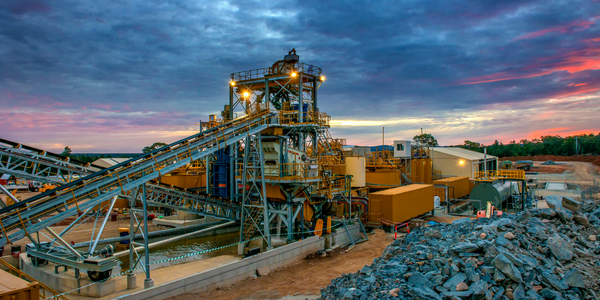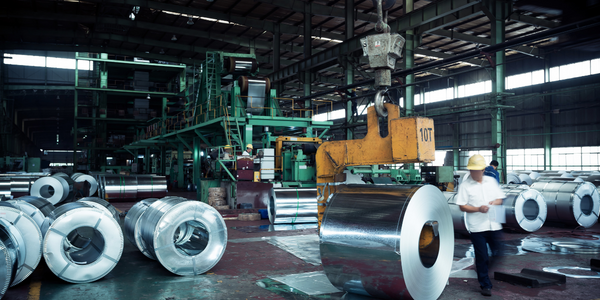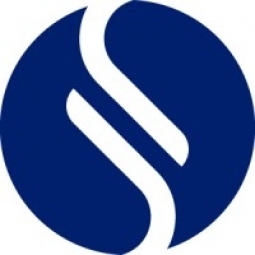公司规模
Large Corporate
地区
- Europe
国家
- United Kingdom
产品
- GaBi Professional
- GaBi Reader
- GaBi Databases ’11
- GaBi Extension Databases I-X, XII, XIV
- Colorcoat® pre-finished steel
技术栈
- LCA Software
- GaBi Software
实施规模
- Enterprise-wide Deployment
影响指标
- Environmental Impact Reduction
- Productivity Improvements
- Innovation Output
技术
- 功能应用 - 产品生命周期管理系统 (PLM)
适用行业
- 金属
- 建筑与基础设施
- 汽车
适用功能
- 产品研发
- 质量保证
服务
- 数据科学服务
关于客户
Tata Steel is Europe’s second largest steel producer with an output of 18 million tonnes of steel per year. The company has been using Life Cycle Assessment (LCA) for 16 years to support the development of its products and to contribute to industry-wide efforts to establish standards for sustainability. The company operates mainly in the automotive, construction, and packaging sectors. Tata Steel's sustainability team uses GaBi Professional, GaBi Reader, GaBi Databases ’11, and GaBi Extension Databases I-X, XII, XIV to build product models covering environmental impacts such as energy use, carbon emissions, water consumption, and material usage.
挑战
Tata Steel, Europe’s second largest steel producer, has been using Life Cycle Assessment (LCA) for 16 years to support the development of its products and to contribute to industry-wide efforts to establish standards for sustainability, particularly in the automotive, construction, and packaging sectors. However, the company faced challenges in understanding how steel performs compared to other materials such as aluminium, concrete, timber, and carbon fibre. They also needed to use LCA studies as a marketing tool to support their supply chains and to support decision making in product development. Another challenge was identifying hot spots in the steel value chain so that efforts to reduce a product’s carbon footprint, water footprint, and energy use can be directed to where they will have most effect.
解决方案
Tata Steel employed a simplified LCA tool for non-specialists from the GaBi software family to build an interactive template (i-report). The tool produces results in a pre-set Environmental Product Declaration (EPD) format for the construction sector. The LCA experts at Tata Steel have developed the Construction Life Cycle Environmental Assessment Resource (CLEAR) model using GaBi. CLEAR allows a standard bill of materials for different building designs to be entered into the model and calculates the full life cycle environmental impacts of the different designs on a complete building, material type, or component basis. The model reflects the complex reality and relies heavily on the quality of data behind the GaBi software. The project has won plaudits within Tata Steel and made it to the final of Innovista, the wider Tata Group’s annual innovation awards.
运营影响
数量效益

Case Study missing?
Start adding your own!
Register with your work email and create a new case study profile for your business.
相关案例.

Case Study
Goldcorp: Internet of Things Enables the Mine of the Future
Goldcorp is committed to responsible mining practices and maintaining maximum safety for its workers. At the same time, the firm is constantly exploring ways to improve the efficiency of its operations, extend the life of its assets, and control costs. Goldcorp needed technology that can maximize production efficiency by tracking all mining operations, keep employees safe with remote operations and monitoring of hazardous work areas and control production costs through better asset and site management.

Case Study
IoT System for Tunnel Construction
The Zenitaka Corporation ('Zenitaka') has two major business areas: its architectural business focuses on structures such as government buildings, office buildings, and commercial facilities, while its civil engineering business is targeted at structures such as tunnels, bridges and dams. Within these areas, there presented two issues that have always persisted in regard to the construction of mountain tunnels. These issues are 'improving safety" and "reducing energy consumption". Mountain tunnels construction requires a massive amount of electricity. This is because there are many kinds of electrical equipment being used day and night, including construction machinery, construction lighting, and ventilating fan. Despite this, the amount of power consumption is generally not tightly managed. In many cases, the exact amount of power consumption is only ascertained when the bill from the power company becomes available. Sometimes, corporations install demand-monitoring equipment to help curb the maximum power demanded. However, even in these cases, the devices only allow the total volume of power consumption to be ascertained, or they may issue warnings to prevent the contracted volume of power from being exceeded. In order to tackle the issue of reducing power consumption, it was first necessary to obtain an accurate breakdown of how much power was being used in each particular area. In other words, we needed to be able to visualize the amount of power being consumed. Safety, was also not being managed very rigorously. Even now, tunnel construction sites often use a 'name label' system for managing entry into the work site. Specifically, red labels with white reverse sides that bear the workers' names on both sides are displayed at the tunnel work site entrance. The workers themselves then flip the name label to the appropriate side when entering or exiting from the work site to indicate whether or not they are working inside the tunnel at any given time. If a worker forgets to flip his or her name label when entering or exiting from the tunnel, management cannot be performed effectively. In order to tackle the challenges mentioned above, Zenitaka decided to build a system that could improve the safety of tunnel construction as well as reduce the amount of power consumed. In other words, this new system would facilitate a clear picture of which workers were working in each location at the mountain tunnel construction site, as well as which processes were being carried out at those respective locations at any given time. The system would maintain the safety of all workers while also carefully controlling the electrical equipment to reduce unnecessary power consumption. Having decided on the concept, our next concern was whether there existed any kind of robust hardware that would not break down at the construction work site, that could move freely in response to changes in the working environment, and that could accurately detect workers and vehicles using radio frequency identification (RFID). Given that this system would involve many components that were new to Zenitaka, we decided to enlist the cooperation of E.I.Sol Co., Ltd. ('E.I.Sol') as our joint development partner, as they had provided us with a highly practical proposal.

Case Study
KSP Steel Decentralized Control Room
While on-site in Pavlodar, Kazakhstan, the DAQRI team of Business Development and Solutions Architecture personnel worked closely with KSP Steel’s production leadership to understand the steel production process, operational challenges, and worker pain points.

Case Study
Bluescope Steel on Path to Digitally Transform Operations and IT
Increasing competition and fluctuations in the construction market prompted BlueScope Steel to look toward digital transformation of its four businesses, including modern core applications and IT infrastructure. BlueScope needed to modernize its infrastructure and adopt new technologies to improve operations and supply chain efficiency while maintaining and updating an aging application portfolio.

Case Study
Integral Plant Maintenance
Mercedes-Benz and his partner GAZ chose Siemens to be its maintenance partner at a new engine plant in Yaroslavl, Russia. The new plant offers a capacity to manufacture diesel engines for the Russian market, for locally produced Sprinter Classic. In addition to engines for the local market, the Yaroslavl plant will also produce spare parts. Mercedes-Benz Russia and his partner needed a service partner in order to ensure the operation of these lines in a maintenance partnership arrangement. The challenges included coordinating the entire maintenance management operation, in particular inspections, corrective and predictive maintenance activities, and the optimizing spare parts management. Siemens developed a customized maintenance solution that includes all electronic and mechanical maintenance activities (Integral Plant Maintenance).








